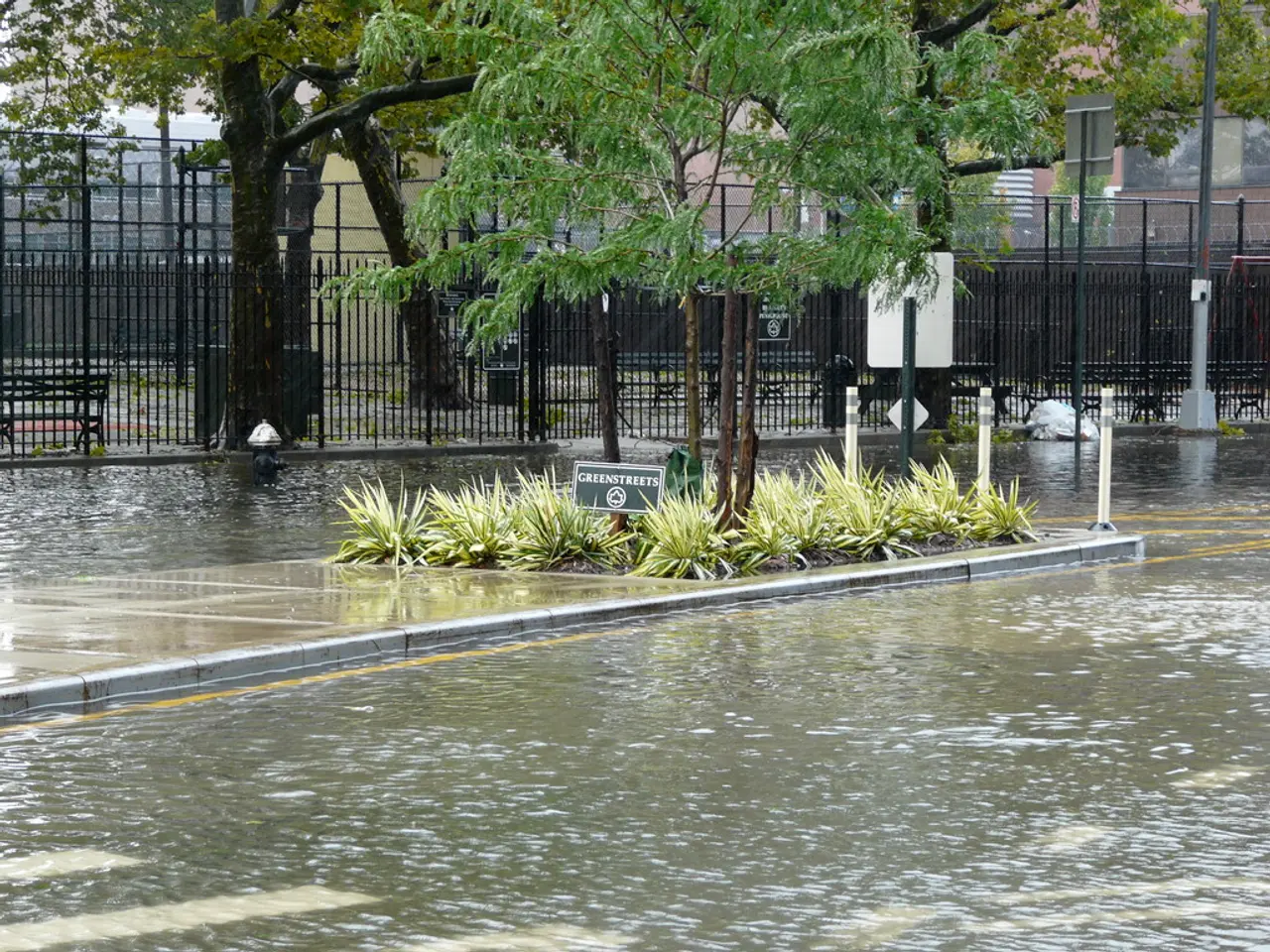Criticism Mounts Against Denmark's Government for Inadequate Rain Emergency Preparedness Plans
Heavy Rain Causes Flooding and Disruptions in Esbjerg, Denmark
In the coastal city of Esbjerg, heavy rainfall has led to flooded roads and the cancellation of the Grøn music festival, as local authorities advise residents to stay indoors. According to Jørgen Ahlquist, the head of Esbjerg Municipality's climate and environment section, the lack of a sewerage system designed to handle large volumes of water is a major issue.
The cost of the heavy rainfall in Esbjerg has societal consequences in terms of costs for local authorities, Ahlquist stated. He has called for a national plan for dealing with heavy rain, a sentiment echoed by national politicians.
Recent weeks have seen heavy rainfall affecting several towns and regions in Denmark. Last week, some areas received more rainfall than the average national rainfall for July within a 24-hour period, prompting a "dangerous" weather warning from the meteorological agency DMI.
The heavy rainfall has become a major inconvenience for many residents of Esbjerg, Ahlquist noted. In response, Environment Minister Magnus Heunicke has announced that national action plans for dealing with future weather are forthcoming.
Denmark has already taken steps to address heavy rain, particularly in Copenhagen, through the Cloudburst Management Plan. This plan designates water catchment areas and includes about 300 public surface projects designed to manage heavy rainfall through green infrastructure, multipurpose urban design, and water storage solutions to reduce flooding risk.
Regarding costs when rain disrupts local communities, Denmark has a relatively high residential flood insurance penetration rate of 75-100%. This means that flood damage is often covered by private insurance rather than solely by government funds. This insurance coverage implies that while public infrastructure projects manage risks generally, individual property owners and communities primarily rely on insurance for compensation following flood events.
However, Leila Stockmarr of the Red Green Alliance party has expressed that a fundamental discussion is needed over who pays the costs when rain disrupts local communities. Stockmarr's call for a discussion follows a report from the Technical University of Denmark (DTU) stating that the cost of flooding, cloudbursts, and storm surges over the next 100 years could run into hundreds of billions of kroner.
In conclusion, Denmark addresses heavy rain through a comprehensive, city-level Cloudburst Management Plan combining green and engineered solutions, while flood-related costs impacting local communities are largely managed through high private flood insurance coverage rates. As the country continues to grapple with the impacts of heavy rain, discussions around who should bear the costs of such events are set to continue.
- The heavy rainfall, apart from causing flooding and disruptions in Esbjerg, has also prompted a discussion over who should bear the costs when such events occur, as expressed by Leila Stockmarr of the Red Green Alliance party.
- In response to the heavy rain incidents affecting several towns and regions in Denmark, Environment Minister Magnus Heunicke has announced that national action plans for dealing with future weather are forthcoming.
- In the city of Esbjerg, the lack of a sewerage system designed to handle large volumes of water is a major issue, according to Jørgen Ahlquist, the head of Esbjerg Municipality's climate and environment section.
- A report from the Technical University of Denmark (DTU) stated that the cost of flooding, cloudbursts, and storm surges over the next 100 years could run into hundreds of billions of kroner, emphasizing the need for policy-and-legislation addressing climate-change implications on the environment-science and general-news front.







